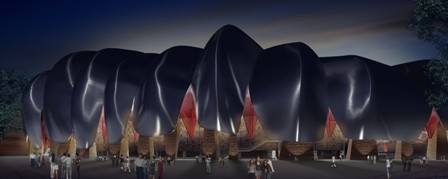 Populous has designed a major sports hub in China after it was selected to design the sports park in the city of Datong, in the northern Shanxi Province, near Beijing.
Populous has designed a major sports hub in China after it was selected to design the sports park in the city of Datong, in the northern Shanxi Province, near Beijing.
The sports park, which includes a 30,000 seat stadium, an 8,000 seat arena, a 1,500 seat natatorium and a multiuse training hall, is part of a larger plan by the Datong Mayor to regenerate the historic old city and create a new city centre with other development including a city hall, museum, convention centre.
Populous, which has its Asian base in Queensland, won an IOC/IAKS Gold Award for the design of a Nanjing sports park built for the 2005 China National Games.
"Our strategy in China as elsewhere in Asia hinges on producing world class design in the Queensland office and investing in the development of long term Client relationships," says senior principal Paul Henry.
Populous' principal Andrew Colling says the inspiration for the unique design in Datong has come from the surrounding Yungang Grottoes or Cloud Ridge Caves.
"These shallow caves just out of Datong are symbolic of the rich cultural heritage of the region, which has evolved over several thousand years. The visitor approach and entry to the stadium is like entering the nearby caves, with the sandstone bases clad in a series of irregular titanium shells," he says.

Datong’s purpose as a military stronghold lasting several dynasties and its current role as a hardworking mining town provided the reference for the themes of strength, masculinity and fortitude reflected in the design, which is balanced by the open spaces within a sports park which are as important as the individual buildings that frame them.
The centralised piazza acts as the main arrival and distribution space in front of the stadium west entrance. This elevated plaza also serves as the roof deck over 700 car spaces and servicing docks.
The seating configuration allows for additional temporary seats, or a new East Stand, to be inserted should the city sporting demand increase in the future.
Water collection, retention and reuse has been major influence in the layout of the site and roof design for each building. Retention ponds are designed into the landscape where possible and each building aims to capture rainwater run-off at any opportunity.
To minimise use of water in maintenance, materials have been selected to maximise self-cleansing properties where possible and each building design has aimed at minimising openings, exposed structural systems or polycarbonate based materials which age less gracefully in harsh climates.
Solar panel technology has been incorporated in a moderate way to assist with heating and isolated energy needs. General construction materials will also be produced and sourced locally and within China.

